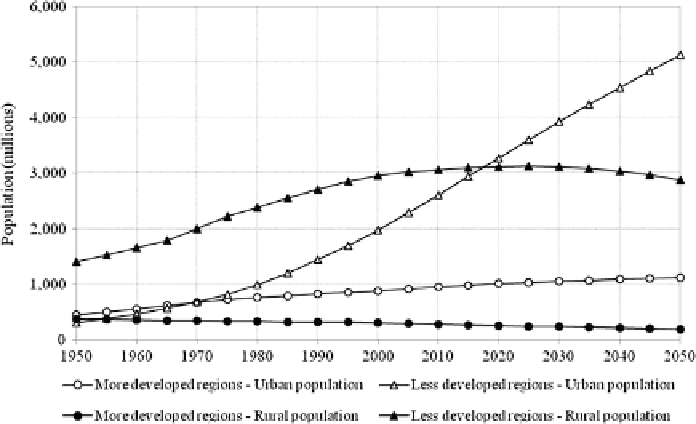Geoscience Reference
In-Depth Information
Fig. 5.16 Urban and rural population by development group, 1950
2050 (UN 2012)
-
The world rural population is expected to reach a maximum of 3.4 billion in
2021 and to decline slowly thereafter, to reach 3.05 billion in 2050. These global
trends are driven mostly by the dynamics of rural population growth in the less
developed regions, which house today almost 92 % of the world rural population.
Whereas the rural population of the more developed regions has been declining
steadily during the second half of the twentieth century and will continue to do so
for the foreseeable future, the rural population of the less developed regions more
than doubled since 1950 and will likely continue to grow until 2021 before a long-
term decline sets in (UN 2012).
5.5.2 Climate and Energetics
Globalization processes and their present tendencies put many problems connected
with the search of strategy for the control by the waste products of different sectors of
the economics. Regions with unstable structure of the NSS dynamics cause special
anxiety. Particularly, the presence of the uncertainty in future development of oil and
gas import from reservoirs of Middle East and North Africa for the reason of the
extension of China and India role leads to the uncertainty in the prediction of future
fl
fluxes of anthropogenic CO
2
. It is expected that under the conservation of present
tendency in the economic development in these regions CO
2
emission can increase by
52 % to 2030 in comparison with present level (WEO 2002, 2004, 2005, 2013).
The need for energy in Middle East and North Africa is regulated by the
requirements of growing population and by growth of the economics. The need for

Search WWH ::

Custom Search